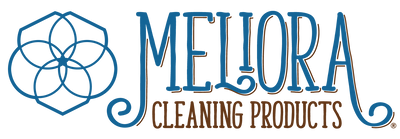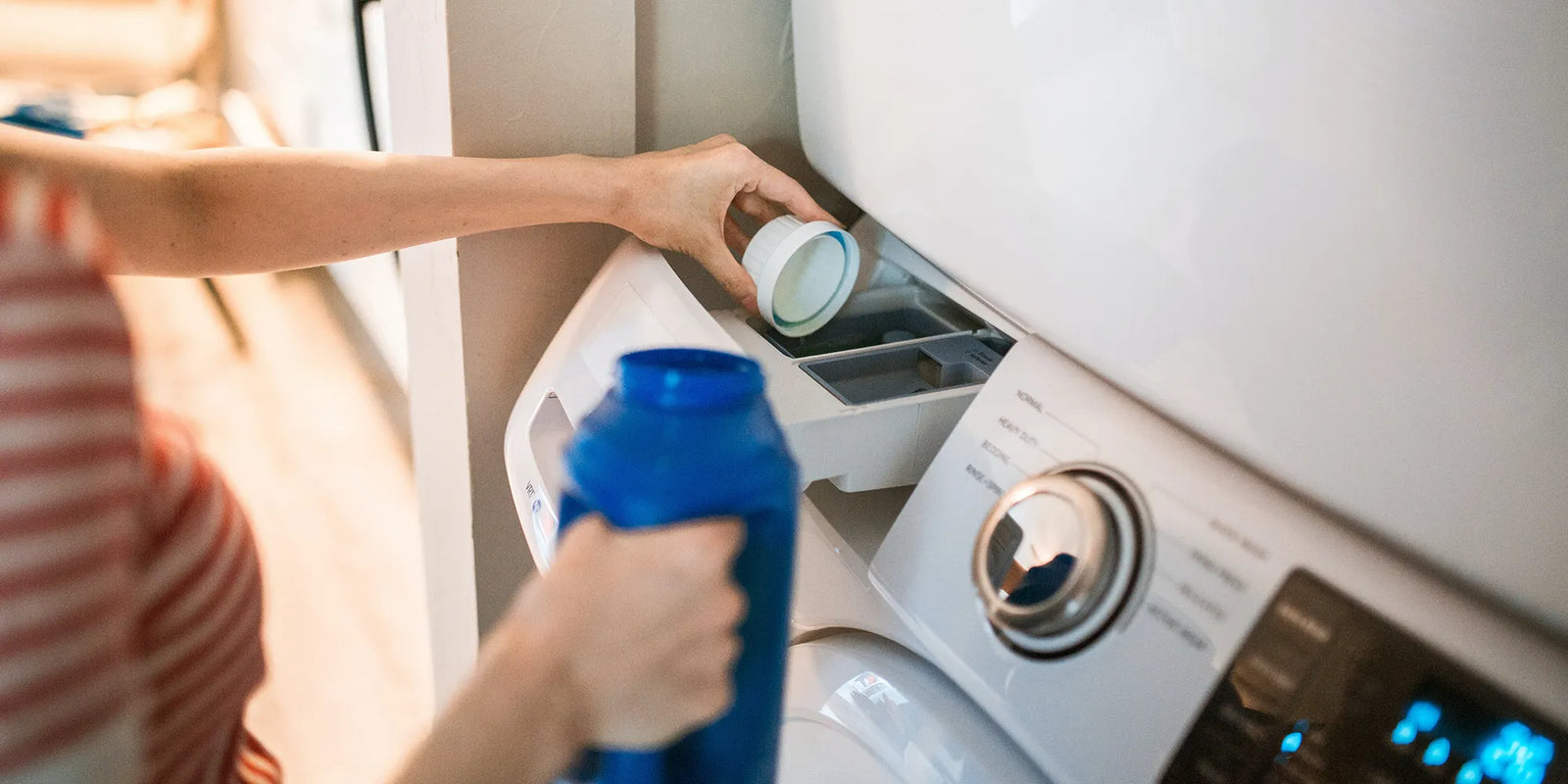Here at Meliora Cleaning Products, the chemical 1,4-Dioxane has been an ingredient of concern since the beginning. As founder Kate began investigating the ingredients in household cleaning products, she came across Dirty Secrets: What’s Hiding in your Cleaning Products, a report from Women’s Voices for the Earth on 1,4-Dioxane levels in 20 different products. The report helped pressure Proctor & Gamble to reformulate Tide detergents to reduce the levels of 1,4-Dioxane. This movement inspired Kate to make safer products with transparent ingredients that were free of 1,4-Dioxane and other contaminants.
Our story with 1,4-Dioxane has come full circle recently, as the state of New York recently enacted legislation to limit the sale of products containing this chemical.
Did New York State ban products containing 1,4-Dioxane?
Not exactly. New York state recently passed a law limiting the amount of 1,4-Dioxane that can be present in household cleaning, personal care, and cosmetic products in the state.
This law went into effect on December 31, 2022.
Products containing less than the limit may still be sold, and manufacturers whose products contain more than the allowable limit are able to apply for up to two one-year waivers. A full list of approved waivers is made publicly available by the New York Department of Environmental Conservation.
Ingredient disclosure is a cornerstone of our business, and although this wasn’t an outright ban, we’re excited to see movement toward greater transparency. We’re continuing to track and report on progress in the United States with our Ingredient Disclosure Map.
What is 1,4-Dioxane?
1,4-Dioxane is a carcinogenic contaminant that is created as a byproduct of a chemical process called ethoxylation, which can be used to create detergents. Because 1,4-Dioxane is a byproduct and not an ingredient, it will not be listed if companies even choose to disclose their ingredients.
What laundry and cleaning products contain 1,4-Dioxane?
1,4-Dioxane is common in laundry detergents, home cleaning products, and cosmetic products. Unfortunately, its presence can only be detected by lab testing. However, because 1,4-Dioxane results from ethoxylation, looking for ethoxylated ingredients is a good place to start. As the name suggests, ethoxylated ingredients are the intentional result of the ethoxylation process. In other words, if a product contains ethoxylated ingredients, it may also contain 1,4-Dioxane.
These ingredients often include “eth” or “oxynol” in their names, such as Sodium Laureth Sulfate (SLES) and Polyethylene Glycol (PEG).
Ethoxylated ingredients commonly found in home products include:
- Sodium Laureth Sulfate (SLES)
- Potassium Laureth Sulfate
- Laureth-6 and Laureth-7
- C12-16 Pareth
- Polyethylene Glycol (PEG)
- Polysorbate-20, Polysorbate-60, and Polysorbate-80
The easiest way for a company to avoid 1,4-Dioxane is to avoid ethoxylated ingredients altogether by making products without using the ethoxylation process. That’s the approach we’ve used since the beginning. Because Meliora Cleaning Products are made without ethoxylated ingredients, they do not contain any 1,4-Dioxane. Our products are also MADE SAFE® Certified, meaning they have passed the strictest ingredient screening requirements in the industry. MADE SAFE® does not permit 1,4-Dioxane in certified products because it is classified as a likely carcinogen.
As an analogy, imagine that you’re trying to stop drinking caffeine. You could switch from fully caffeinated beans to decaffeinated coffee, which goes through a special chemical process that reduces the amount of caffeine but does not completely eliminate it. Or you could switch to water or orange juice, knowing you’re drinking something that could never have caffeine in the first place.
1,4-Dioxane contents in parts per million (ppm)
|
Laundry Detergent |
1,4-Dioxane parts per million (ppm) |
|
Tide Original |
14.0 ppm |
|
2X Ultra Ivory Snow (Gentle Care) |
11.0 ppm |
|
Gain Original |
10.0 ppm |
|
Tide Simply plus Oxi (Refreshing Breeze) |
8.3 ppm |
|
All with Stain Lifters (Fresh Rain) |
5.2 ppm |
|
Up & Up Fresh Linen |
4.3 ppm |
|
Arm and Hammer (Clean Burst, 2x Concentrated) |
2.8 ppm |
|
Purex plus Oxy Stain Removers (Fresh Morning Burst) |
2.0 ppm |
|
Xtra (Tropical Passion) |
0.89 ppm |
|
Method (Ginger Mango) |
0.22 ppm |
|
Mrs. Meyer’s (Lavender Scent) |
Not detected (less than 0.025 ppm) |
|
Seventh Generation (Free and Clear) |
Not detected (less than 0.025 ppm) |
|
Made without ethoxylated detergents |
|
Dish Soap |
1,4-Dioxane parts per million (ppm) |
|
Up & Up Free and Clear |
6.4 ppm |
|
Dawn |
3.6 ppm |
|
Palmolive Raspberry Coconut |
2.8 ppm |
|
Ajax |
2.5 ppm |
|
Made without ethoxylated detergents |
|
Hand Soap |
1,4-Dioxane parts per million (ppm) |
|
Soft Soap Fresh Breeze |
1.9 ppm |
|
Dial Coconut Water and Mango |
0.99 ppm |
|
Made without ethoxylated detergents |
Data from Citizens Campaign for the Environment’s 2019 Consumer Shopping Guide: Protecting Your Household from 1,4-Dioxane Exposure. Meliora Cleanings Products, which are made without ethoxylated ingredients, were not tested and are included for comparison.
How can I find out what ingredients are in laundry and cleaning products?
To date, there is no Federal law requiring the disclosure of the ingredients used in home cleaning products in the US. California enacted a law in 2017 requiring the disclosure of ingredients used in home cleaning products (except for “fragrances” and “Confidential Business Information”-related ingredients). Otherwise, nothing requires companies to list ingredients on their packaging or websites. They don't even need to tell you what's in their products when you call and ask.
Look for companies that opt to disclose the ingredients in their products. The reason Kate founded Meliora Cleaning Products in 2013 was simple—she thought you deserved to know exactly what's in the products you bring into your home, and how they affect the people and planet around you.
We always have and always will list every ingredient right on the label and on our website. Our Chemical Policy governs our decisions about what chemicals we use and why. We’ll also tell you why we use each ingredient and where it comes from on our Ingredients page.
Cover photo by RODNAE Productions

